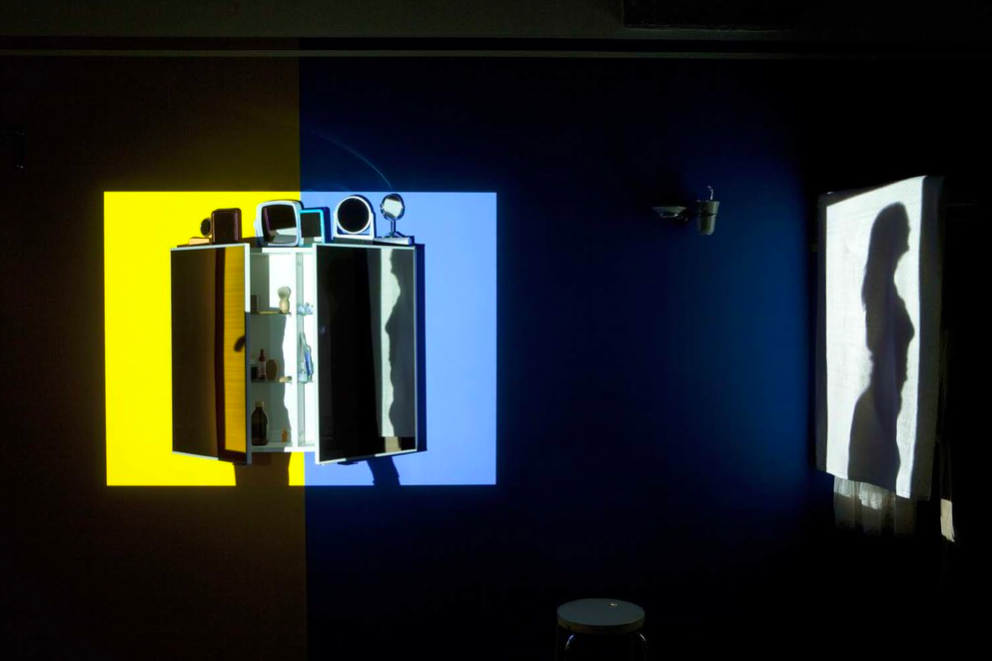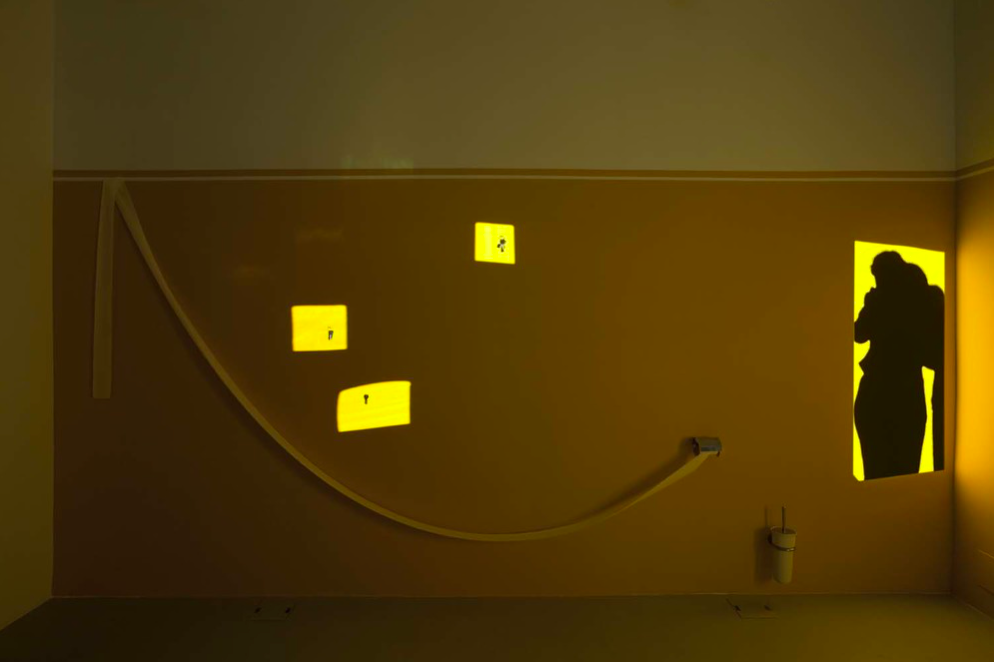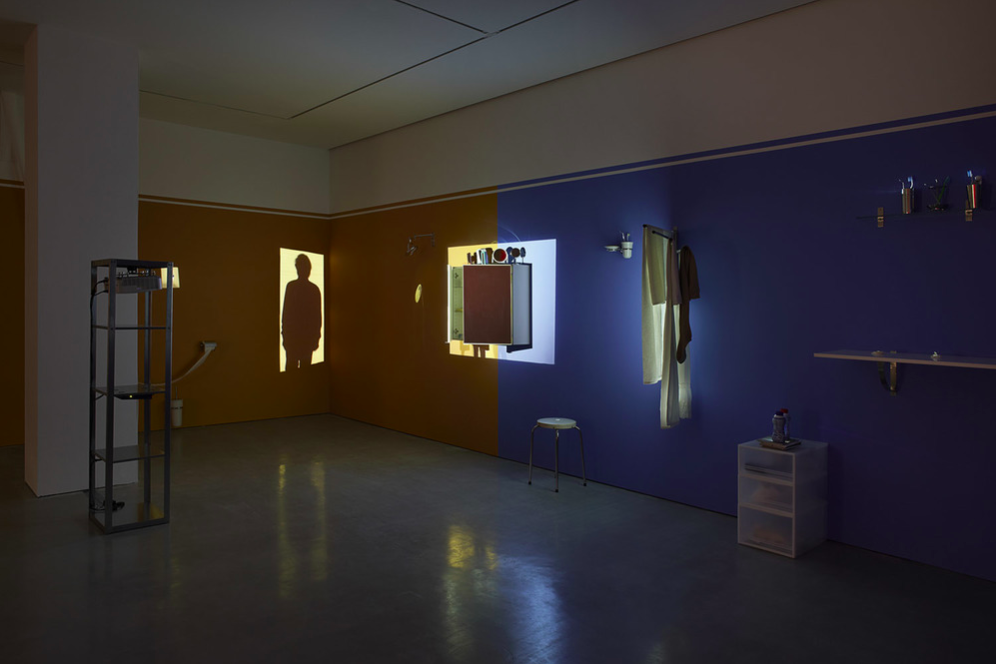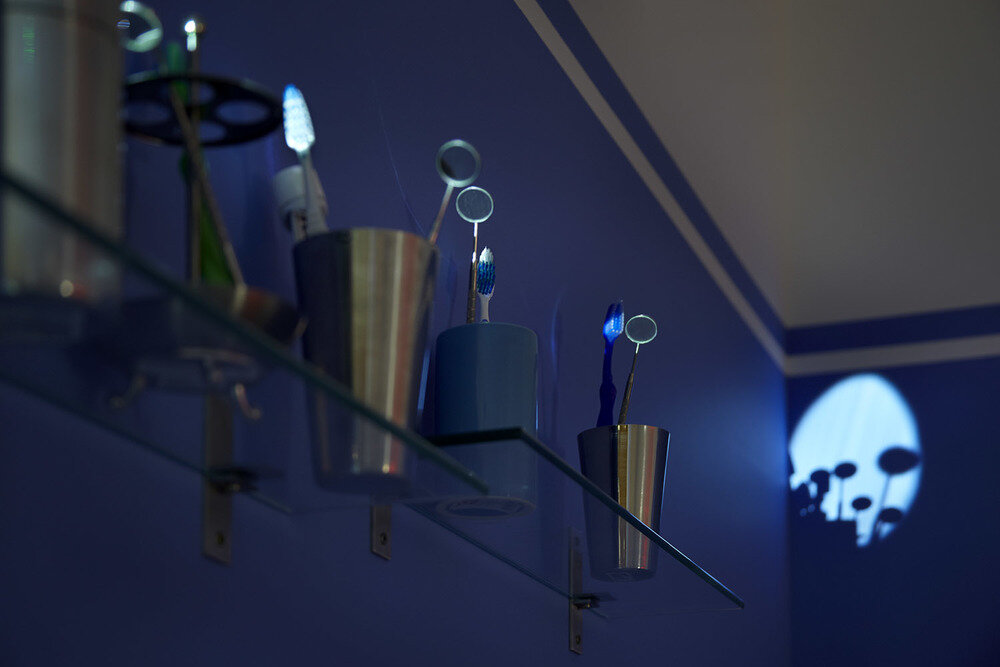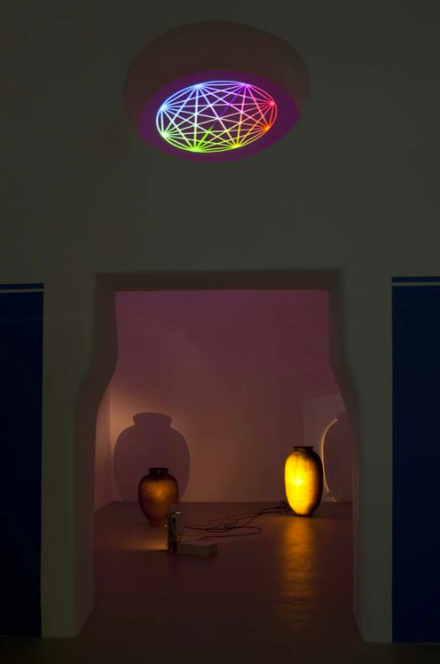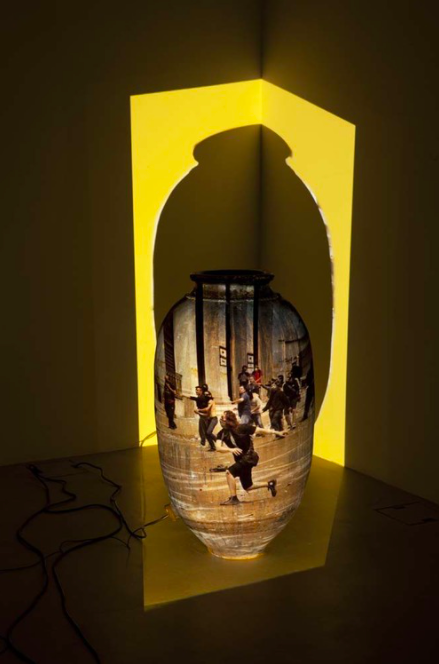Eulalia Valldosera
We are One Body
October 25 — November 27, 2012
The Catalan artist has transformed the gallery space for her exhibit, composed of videos, projections of light and shadows, photographs and objects, which interact and come to life in a enthralling “mise-en-scène” spotlighting how family and sentimental relationships are conditioned by the feminine and masculine forces that are deeply rooted in each individual. In the most universal sense, her works delve into the individual and collective subconscious, the symbolic value of objects which are used on a daily basis and, in particular, the power struggle in social relationships.
The exhibit will also include the installations entitled Mother & Father and We are One Body as well as a few photographs from the Family Ties series.
In the theatrical shadow of the work entitled Mother & Father, a man and a woman perform a sequence of acts in a ritual of love and hate. The mother and father roles we have interiorized comprise our emotional and relational makeup. The images, projected from a single source, are captured in a multitude of mirrors and reflect fragments of light and shadow onto everyday objects in a bathroom specifically built for the exhibit. The light and shadows bounce from one object to another and draw the spectator into a play of multiple reflections.
In the We are One Body instalment, internet footage of the recent revolt in Athens is projected onto on the surface of an old, earthenware urn as audio of the street fighting and the prophetic metaphysic declarations of American hypnotist Dolores Cannon are emitted from the inside of another urn while abstract, transcendent geometric images are projected on the ceiling. The dislocated images and audio, in contrast to the synchronization of television language to which we have all become so accustomed, disorient the spectator. The protagonists of the street fighting, the demonstrators and the police, evoke the Greek archetype of the warrior who defends his territory at the cost of his own life and harks back to the social drama which is taking place on a global scale. The urns, similar to the amphorae used for storing wine, allude to the current social tumult.
In the photographs in the Family Ties series, the subjects are members of two types of families, one structured in a traditional manner and the other corresponding to what has become a wide-spread, contemporary model which might best be termed as fluid. The artist asked each subject to interpret his or her usual role in real life and then in overlapping the images in light and shadow and scenes of bodies intertwining and fusing together, expresses the complexity of family ties and the array of inner emotions which recede into each other.


